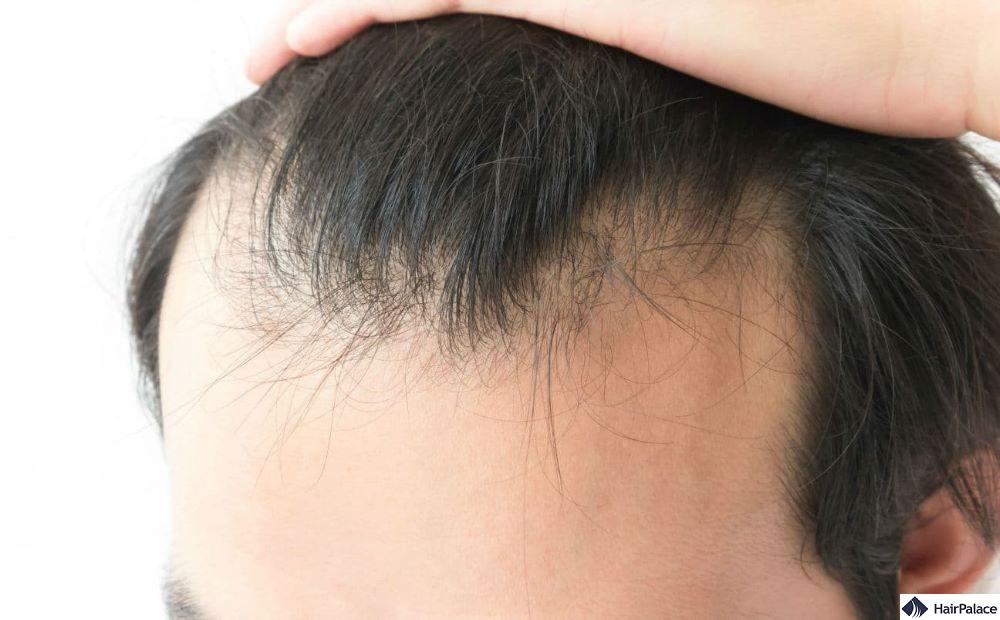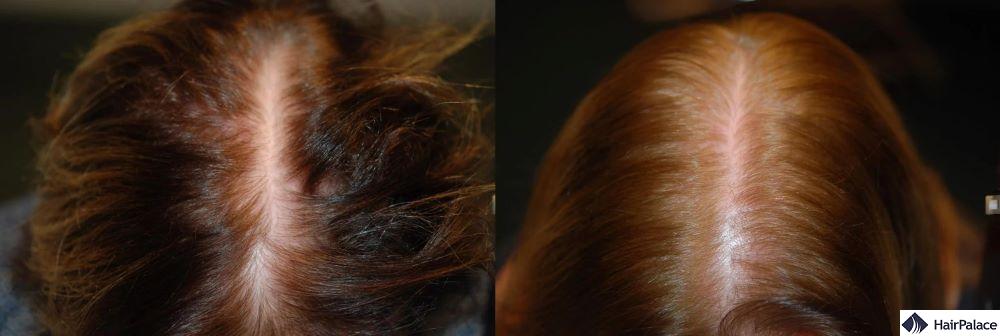Saw Palmetto Hair Loss Treatment

Hair loss affects millions of men and women worldwide, and the search for a natural solution never seems to end.
Among the growing list of herbal remedies, saw palmetto has gained attention as one of the emerging plant-based options for promoting fuller, thicker hair.
Unlike prescription treatments, it offers a gentler, more holistic approach, appealing to those who prefer natural alternatives with fewer side effects.
But does this natural hair supplement actually work?
In this article, we’ll take a closer look at the science, benefits, and real-world results behind saw palmetto for hair loss.
- Saw palmetto for hair loss
- What are the benefits of saw palmetto?
- Should you use saw palmetto for hair loss?
- Saw palmetto hair loss before and after
- Saw palmetto dosage for hair loss
- The final verdict
Saw palmetto for hair loss

Saw palmetto is a plant extract derived from the berries of the Serenoa repens palm.
Its main appeal lies in its potential to inhibit the enzyme 5-alpha-reductase, which converts testosterone into dihydrotestosterone (DHT).
By lowering DHT levels in the scalp, saw palmetto may help reduce excessive hair shedding due to male and female pattern hair loss.
Research on its effectiveness is still developing, but multiple studies suggest that consistent use can slow the progression of hair loss.
Whether taken orally or applied topically, it shows promising results in improving hair regrowth.
Saw palmetto oil for hair loss
When used topically, saw palmetto oil targets the scalp directly, allowing its active compounds to absorb where DHT production occurs.
This localised approach can help block DHT at the follicular level, reducing miniaturisation and combating thinning hair.
Most formulas combine saw palmetto oil with carrier oils, such as jojoba or pumpkin seed oil, to enhance absorption and provide additional nourishment for the scalp.
Regular scalp massage with the oil may also stimulate circulation, further promoting a healthier environment for hair growth.
While results may take several months, users often report less shedding and improved texture with consistent use.
For best results, saw palmetto oil should be integrated into a broader routine for male pattern baldness.
What are the benefits of saw palmetto?

Beyond its potential for reducing hair loss, saw palmetto offers a range of well-documented health benefits.
Traditionally used in herbal medicine, it supports hormonal balance by moderating the conversion of testosterone to DHT.
One of its most recognised advantages is its role in supporting prostate health, particularly in men with benign prostatic hyperplasia.
By easing urinary symptoms and improving flow, saw palmetto contributes to a better quality of life and hormonal regulation.
Additionally, saw palmetto’s anti-inflammatory and antioxidant properties may help protect cells from oxidative stress and inflammation.
Together, these effects create a more balanced internal environment that can indirectly benefit the hair growth cycle and skin health.
Should you use saw palmetto for hair loss?
Saw palmetto can be a worthwhile option for those seeking a natural, non-prescription approach to hair loss management.
It’s most suitable for people in the early to moderate stages of androgenetic alopecia, where DHT suppression can still make a visible difference.
While scientific evidence is promising, results vary widely between individuals.
Some notice thicker hair density and reduced hair loss after several months, while others experience only minor improvement.
Because it works gradually, consistency and patience are essential for increased hair growth.
Saw palmetto is generally safe, though mild side effects like stomach discomfort or reduced libido can occur in rare cases.
Saw palmetto hair loss before and after

Saw palmetto dosage for hair loss
The optimal saw palmetto dosage for hair loss depends on the form you’re using.
Most clinical studies examining its effect on DHT and hair growth use 160 to 320 mg of liposterolic extract per day, typically divided into one or two doses.
When applied topically, saw palmetto is usually found in shampoos, serums, or oils with concentrations between 0.5% and 5%.
Regular scalp application, several times a week, can complement oral supplementation for a combined effect.
It’s important to note that results often take three to six months of consistent use.
Because supplement quality varies, choose standardised extracts that specify the percentage of fatty acids.
This is important because these are the active components responsible for DHT inhibition.
Always follow product instructions and consult your doctor before combining saw palmetto with other hair loss treatments to ensure safety.
The final verdict
Saw palmetto stands out as a promising natural alternative for those who prefer a plant-based approach to managing hair loss.
Its potential to reduce DHT levels and support scalp health makes it an appealing addition to a long-term hair care routine.
However, while the results from early studies and user experiences are encouraging, there is limited scientific evidence behind saw palmetto.
It’s unknown whether it works as effectively as clinically approved treatments like finasteride or minoxidil.
In our opinion, its benefits appear to be milder and more gradual, requiring consistent use over several months.
That said, for individuals seeking a gentler, side-effect-friendly option, saw palmetto remains a great option.
If you combine it with a balanced lifestyle and proper scalp care, it can play a crucial role in maintaining stronger hair follicles and combating androgenetic alopecia.
FAQ
Most research suggests taking 160–320 mg of standardised saw palmetto extract daily, divided into one or two doses. This amount appears effective for reducing DHT levels linked to hair thinning. Consistency is key, as visible results typically take three to six months of regular use.
Saw palmetto does not cause hair loss. In fact, it’s often used to help prevent it by blocking the enzyme that produces DHT. However, if you stop using it suddenly, any benefits gained may gradually fade as DHT levels return to normal.
- Sudeep HV, Rashmi S, Jestin TV, Richards A, Gouthamchandra K, Shyamprasad K. Oral and Topical Administration of a Standardized Saw Palmetto Oil Reduces Hair Fall and Improves the Hair Growth in Androgenetic Alopecia Subjects - A 16-Week Randomized, Placebo-Controlled Study. Clin Cosmet Investig Dermatol. 2023 Nov 11;16:3251-3266. doi: 10.2147/CCID.S435795. PMID: 38021422; PMCID: PMC10648974.https://pubmed.ncbi.nlm.nih.gov/38021422/
- Dhariwala MY, Ravikumar P. An overview of herbal alternatives in androgenetic alopecia. J Cosmet Dermatol. 2019 Aug;18(4):966-975. doi: 10.1111/jocd.12930. Epub 2019 Apr 13. PMID: 30980598.https://pubmed.ncbi.nlm.nih.gov/30980598/
- Ufomadu P. Complementary and alternative supplements: a review of dermatologic effectiveness for androgenetic alopecia. Proc (Bayl Univ Med Cent). 2023 Dec 20;37(1):111-117. doi: 10.1080/08998280.2023.2263829. PMID: 38174012; PMCID: PMC10761108.https://pubmed.ncbi.nlm.nih.gov/38174012/


